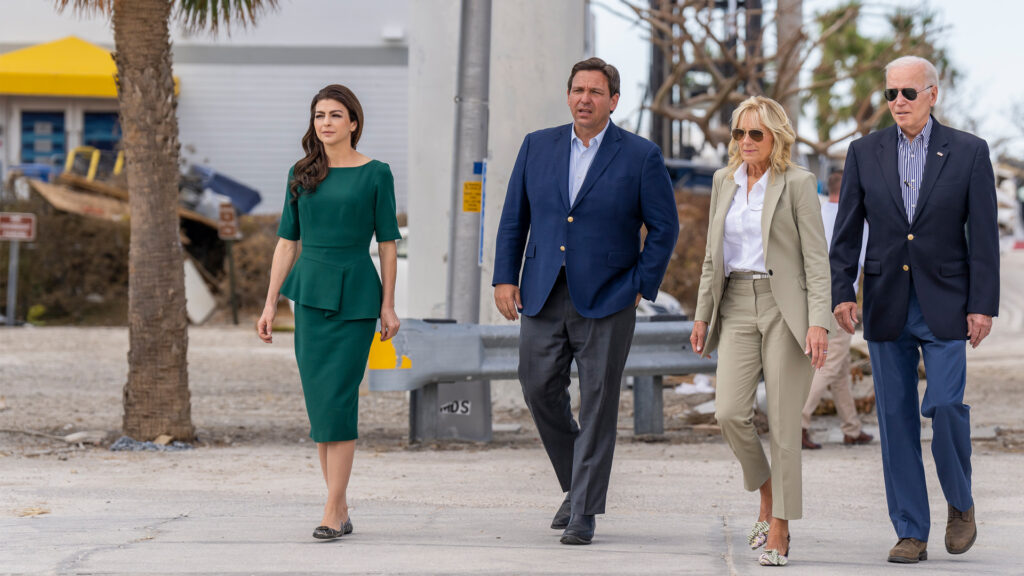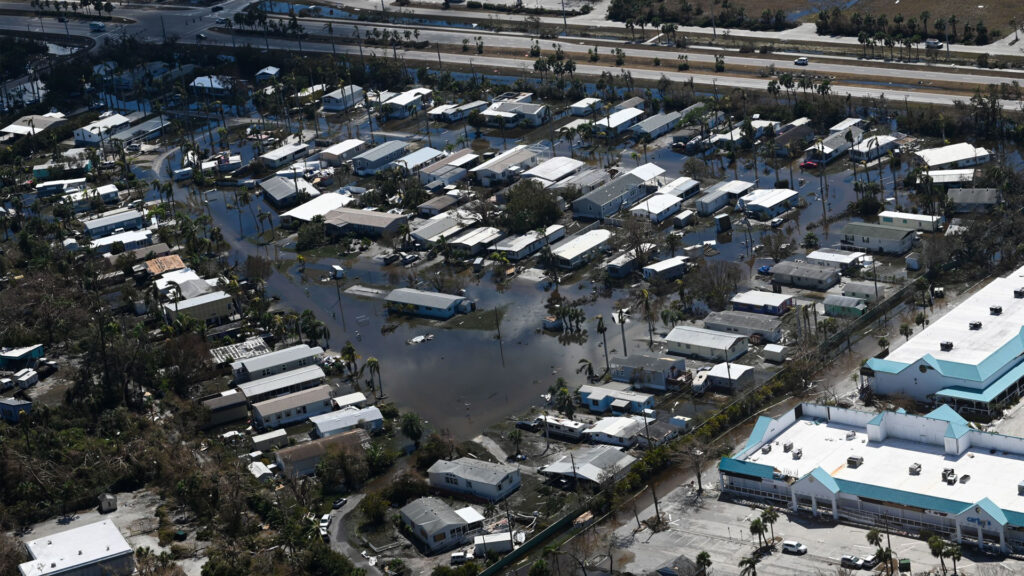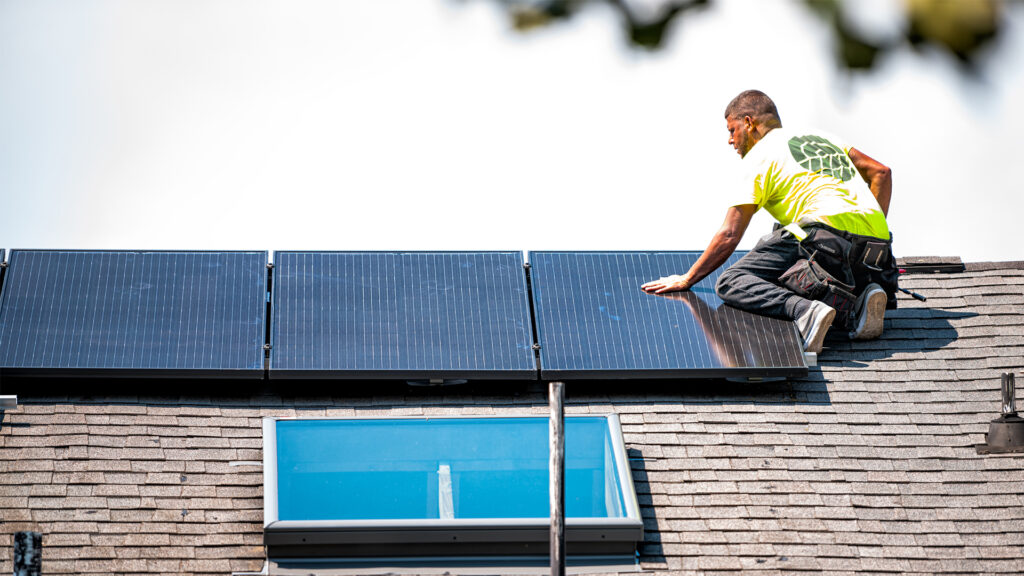This article originally appeared on Inside Climate News, a nonprofit, independent news organization that covers climate, energy and the environment. It is republished with permission. Sign up for their newsletter here.
By Amy Green, Inside Climate News
ORLANDO, Fla. — Florida gave up $3 million in federal grant funding and as much as $500 million more by declining to participate in a Biden administration program aimed at helping states address the human-caused emissions warming the global climate.
The Climate Pollution Reduction Grants program represents one of the largest shares of funding under the Inflation Reduction Act. The program offers $5 billion for states, municipalities, tribes and other governments to plan and carry out projects targeting greenhouse gas emissions.
Forty-five states, the District of Columbia, Puerto Rico, dozens of municipalities, four territories and more than 200 tribes submitted Priority Climate Action Plans under the first phase of the program. Together the plans convey a mosaic of community priorities as they help drive a major federal investment in the transition to cleaner energy, said Rachel Patterson, state policy advisor at Evergreen Action, a nonprofit focused on federal and state climate policy.
Florida was one of five states that did not submit a climate action plan. That decision excludes them from $3 million in initial federal grant funding each and disqualifies them from the program’s second phase, which makes $4.6 billion available to implement the plans, with grants worth up to $500 million each. The other states that did not submit plans were Iowa, Kentucky, South Dakota and Wyoming, although Florida stands out as especially vulnerable, Patterson said.
“States have never gotten free money to plan how they’re going to address climate change before. This has never happened,” said Patterson, whose group joined with the similarly aligned organizations RMI and Climate-XChange to review the plans from 45 states, the District of Columbia and Puerto Rico. “Any state that wants to spend their own taxpayer dollars instead of federal government dollars is not making the best use of their funds.”
Mary Anna Mancuso, a political strategist and spokeswoman for republicEn, a group supporting conservative climate leadership, said Florida’s lack of participation was a surprise.
“Florida is ground zero for climate change, and you would hope that the Sunshine State would be doing everything in its power to stay above water, right?” she said. “It shows that reducing emissions in Florida is not a priority for the DeSantis administration.”

It is not clear why Florida Gov. Ron DeSantis, a former Republican presidential candidate, or his administration declined the money. Multiple emails for comment were not returned. Last year the DeSantis administration similarly opted out of $320 million in federal funding to reduce vehicle emissions. At the time, state Transportation Secretary Jared Perdue sent the Biden administration a letter characterizing that money as “the continued politicization of our roadways.”
“We recognize that we are in a tropical climate. We have different disturbances that can happen during hurricane season,” DeSantis said last Wednesday during an event in Tampa where he touted the state’s $1.8 billion Resilient Florida program, characterized by his administration as an historic investment to prepare communities for rising seas, more intense storms and flooding. “While we always hope for the best, we always prepare for the worst, and we want to make sure that folks throughout Florida have the tools they need to weather whatever storms come their way.”
DeSantis has focused his climate policy as governor on the Resilient Florida program. The program provides communities with grant funding for vulnerability assessments that identify risks, and for local planning and policies that address the problems. Notably, the program acknowledges the risks faced by coastal and inland communities.
Since it was established in 2021 the program has awarded grants for more than 320 vulnerability assessments and 351 resilience projects, according to the DeSantis administration. The projects are summarized in a Statewide Flood and Sea Level Rise Resilience Plan produced by the Florida Department of Environmental Protection (FDEP). The state Department of Transportation (FDOT) also crafted a Resilience Action Plan examining the vulnerabilities of the state highway system. The program requires FDEP to complete a comprehensive statewide flood vulnerability and sea level rise assessment, including an inventory of critical assets.
The focus on resilience is urgent for communities grappling with climate impacts like flooding right now, said Erin Deady, an environmental attorney specializing in land use and resilience.
“I can tell you this is immense, just seeing all of this data and trying to make sure the data submitted from the local governments is consistent,” she said. “It’s not sexy, but getting the data and getting the information is really super-critical.”

For a region like southwest Florida, which is perhaps behind others in the state when it comes to resilience planning, the program and installation of state Chief Resilience Officer Wes Brooks have been catalyzing, said Carrie Schuman, principal climate resilience specialist at the Conservancy of Southwest Florida, an advocacy group. Southwest Florida was hit hard in 2022 when Hurricane Ian came ashore as a category 4 storm.
“It created some standardization,” she said of Resilient Florida. “Lots of people are trying to figure out, What do I do? And it’s a messy, thorny process that I think having some formalized structure has allowed the state and FDEP through that program to at least give some guidance.”
DeSantis last Wednesday signed additional bills into law, one investing $200 million in a separate program to help homeowners fortify their homes, and another establishing a new program to assist condominium associations with hardening their buildings. Earlier last month the governor signed yet another bill putting an additional $100 million toward Resilient Florida.
“This money is money that Florida taxpayers have already paid. It’s federal government money that is going to be spent. It’s already been allocated.”
Together the measures represent a significant departure from the climate policy of DeSantis’ predecessor, Rick Scott, a Republican and current U.S. Senator facing re-election in November. Scott gutted environmental programs and famously banned the words “climate change” from state agencies. But DeSantis, who has described himself as “not a global warming person,” has done little to address the main cause behind the warming climate — greenhouse gas emissions.
As a presidential candidate, DeSantis shifted more sharply right. Last fall, standing in front of an oil rig in Midland, Texas, he unveiled an energy plan that involved, among other things, withdrawing the U.S. from the Paris Agreement, the international treaty aimed at limiting warming to a threshold where scientists say climate impacts become more severe. From behind a podium adorned with the words “Fueling American Freedom,” he pledged to expand American dominance in oil and gas, going so far as to promise he would replace the words “climate change” with “energy dominance” in national security and foreign policy guidance.
Florida is uniquely vulnerable to climate change, encountering hotter temperatures, rising seas and more damaging storms. In the last seven years, Florida has weathered four major hurricanes. Michael, which made landfall in 2018 in the Panhandle, was the first category 5 hurricane to strike the continental United States since Andrew in 1992. Ian was the costliest hurricane in state history and third-costliest on record nationwide after Katrina in 2005 and Harvey in 2017. Recent major hurricanes also include Irma in 2017 and Idalia in 2023.
“It’s really unfortunate that they decided not to accept this money, which really would have just made it so much easier for us to develop a statewide strategy to reduce greenhouse gas emissions,” said Brooke Alexander-Goss, organizing manager at the Sierra Club in Florida. “This money is money that Florida taxpayers have already paid. It’s federal government money that is going to be spent. It’s already been allocated. So Florida along with the other states that declined this money are going to see their money go to another state.”

After Florida and the other states opted out of the funding, each of their $3 million grants were redispersed, ideally to metropolitan areas within their own states; if none were eligible, the funds were sent to metropolitan areas in other states. Metropolitan areas were eligible for $1 million each, and in Florida a portion of the $3 million funding went to one metropolitan area, North Port-Sarasota-Bradenton. Four other Florida metropolitan areas also received money: Jacksonville, Miami-Fort Lauderdale-Pompano Beach, Orlando-Kissimmee-Sanford and Tampa-St. Petersburg-Clearwater.
The state climate action plans submitted under the Inflation Reduction Act program were as diverse as the states themselves, said Patterson of Evergreen Action. Some took a holistic approach and were intentional about addressing high-emission sectors like construction, transportation, energy and waste. Other plans focused more on community needs, she said.
Some states crafted plans to expand or address gaps in their current strategies. Some measures were specific, like one in Alabama calling for “solar/charging infrastructure supporting irrigation” in rural areas. Others were more general, like one in Washington, D.C. that suggested accelerating “the deployment of local, clean, renewable, and resilient energy.” Many states were interested in related economic and health benefits, especially those where the added advantages might help make the plans more successful politically. For nearly half of the states, the plans were the first of their kind ever. The Environmental Protection Agency recommended the plans focus on “near-term, high-priority, implementation-ready measures” to reduce greenhouse gas emissions, according to a preliminary analysis by Evergreen Action, RMI and Climate-XChange.
“It does feel more significant that Florida didn’t engage here at all given there are real frontline communities already being impacted by climate change,” Patterson said. “It’s very clear that Gov. DeSantis wanted to make this a partisan narrative.”
Amy Green covers the environment and climate change from Orlando, Florida. She is a mid-career journalist and author whose extensive reporting on the Everglades is featured in the book “Moving Water,” published by Johns Hopkins University Press, and podcast “Drained,” available wherever you get your podcasts. Amy’s work has been recognized with many awards, including a prestigious Edward R. Murrow Award and Public Media Journalists Association award.
This story was produced in partnership with the Florida Climate Reporting Network, a multi-newsroom initiative founded by the Miami Herald, the South Florida Sun Sentinel, The Palm Beach Post, the Orlando Sentinel, WLRN Public Media and the Tampa Bay Times.
Sign up for The Invading Sea newsletter by visiting here. If you are interested in submitting an opinion piece to The Invading Sea, email Editor Nathan Crabbe at ncrabbe@fau.edu.




Hello, I could use some clarification here. Was this article originally published in 2023? DeSantis vetoed IRA planning grants in the State’s proposed budget in 2023.
And we are waiting to see what he does this year with those same grants. This article is dated May 3, 2024 and leads me to think that he has vetoed them again.
Thanks for your comment. The article was published in May 2024 and refers to a different state government decision than the veto you referenced. It involves the Climate Pollution Reduction Grants program, which is also under the Inflation Reduction Act: “Florida was one of five states that did not submit a climate action plan. That decision excludes them from $3 million in initial federal grant funding each and disqualifies them from the program’s second phase, which makes $4.6 billion available to implement the plans, with grants worth up to $500 million each.”